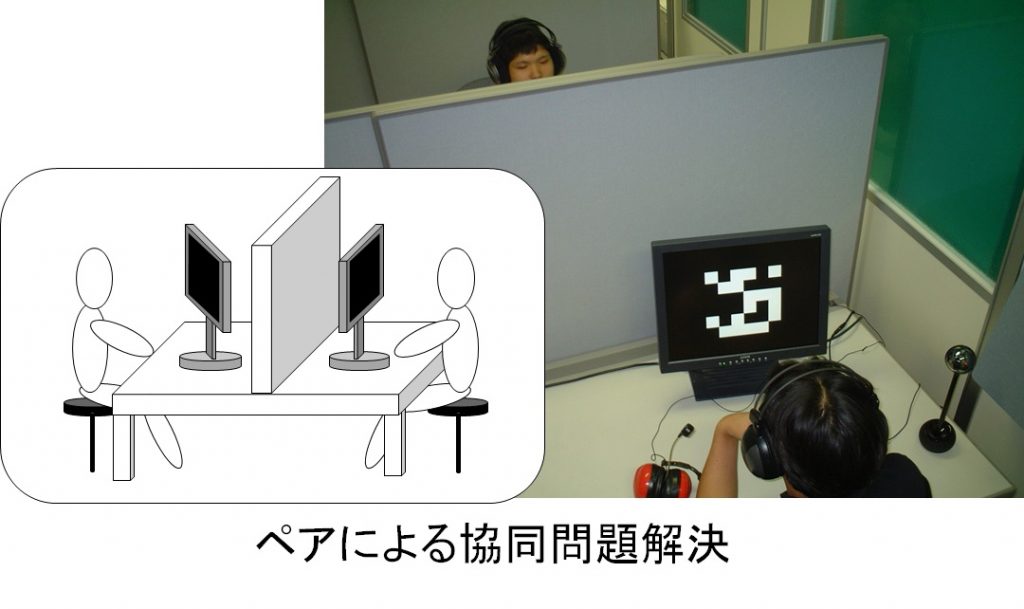“Two heads are better than one.” New knowledge can be generated by the collective knowledge of groups through collaboration. However, past studies have shown that simply adding manpower to a group may not facilitate its performance. It is important to consider the types of interactions that may facilitate the activity within the group. Multiple studies in cognitive science using field studies, experimentation, and computational simulations have shown what types of interactions facilitate performance during collaborations. In our lab, we investigate collaborative problem solving in groups with members that have different perspectives and see when and how these different perspectives can become a powerful source to facilitate the group’s problem-solving performance. We also use conversational agents as experimental tools to control the conversational behaviors of the collaborative members and to specify the effective interactions in collaborative problem solving.
Collaborating in Pairs
林勇吾, 三輪和久, 森田純哉(2007), 異なる視点に基づく協同問題解決に関する実験的検討, 認知科学, 14(4),604-619
Collaborating in Small Groups Trust
林勇吾(2017), 信頼構築プロセスが協同問題解決の視点取得に及ぼす影響:エージェントを利用した実験的検討, 人工知能学会論文誌, 32(4),E-G91_1-9
Collaborating in Small Groups Minority Effect
Developing experimental system
林勇吾・小川 均(2012),多人数に基づく協同問題解決に関する実験的研究のためのプラットフォーム開発,知能と情報,24(4),848-857

